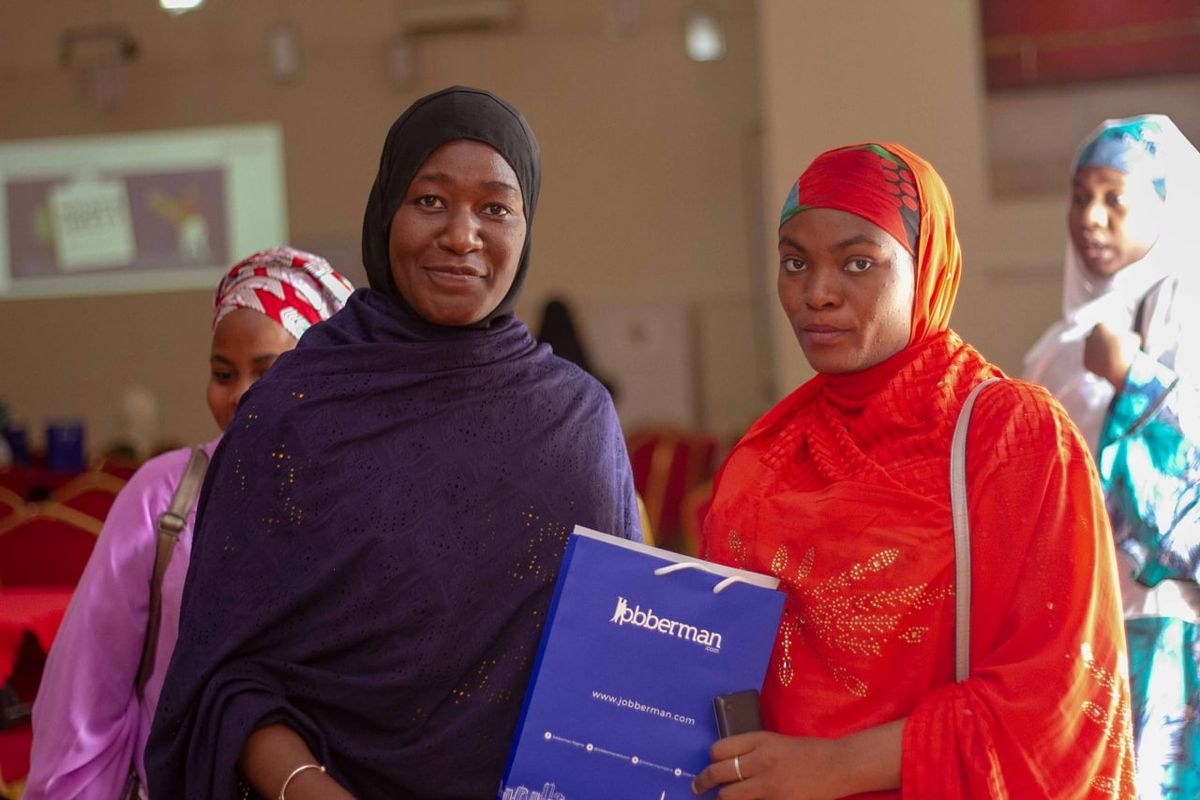How tech is powering an active women labour force in Nigeria
Insights into Jobberman's report on barriers to woman's participation in Nigeria's labour market.

The informal sector is increasingly becoming an economic haven for women primarily due to its low barrier to entry. Unlike the formal sector which has rigid thresholds, obstacles and discrimination to entry, the informal sector is redefining work and helping women become more active players in Nigeria’s economy.
Jobberman Nigeria, the single largest job placement website in sub-Saharan Africa, released a gender parity report titled ‘Unmasking the Barriers to Women’s Participation in Nigeria’s Labour Market’. A key insight of this report is that less than a million women are in formal employment while 95% of working women are engaged within the informal sector which is largely characterised by poor safety measures and low wages.
For example, women constitute 70% of agricultural labour in Nigeria and produce 90% of food, however, they are more prone to lower wages due to limited access to land, skills, finance and low adoption of mechanisation.
83% of jobs in Nigeria are in the informal sector and this is because most jobs in the informal sector do not have barriers (such as a degree or formal working experience) unlike the formal sector.
The research leans towards three sectors: the digital sector, the creative sector and the agriculture sector. Some of the key findings from the research carried out with about 1000 respondents in Lagos, Kano and Kaduna suggest that the creative sector is largely characterised by fewer barriers compared to the other sectors as people don’t essentially require specific qualifications or sophisticated skill sets, huge capital, physical strength or certification to participate.
The creative sector offers opportunities, especially for women, to leverage talents and unconventional skills to create employment opportunities for themselves and others. All they need is to put out their music, arts or videos in the case of the entertainment industry or showcase their craft, services or product in the case of the beauty and lifestyle industry leveraging social media to gain significant attention.
To discuss these findings, Benjamindada.com spoke with Olamide Adeyeye, the Monitoring, Evaluation, Research & Learning Lead at Jobberman Nigeria to take a look into what policies can be put in place to enable Nigeria to fulfil its commitment to reducing the gap in labour participation by 25% by 2025.

The Labour Gender Inequality Conundrum
According to NBS Q4 2020 data, women make up the larger amount of Nigeria’s economically active population, with 61.3 million (50.5% ). This suggests that there should be an almost equal ‘contribution’ between men and women to the economy but that's not the case. Unfortunately, they are underrepresented in the labour force with a gap of 13.42%. Moreso, the female unemployment rate in Nigeria is 35.2%.
Olamide Adeyeye stated that the Gender gap problem in Nigeria’s labour market is everybody's problem. “Thinking about women's participation in the labour market, the first thing is to recognize that we are not paying a favour to women.
The goal is not to accommodate women in the labour market but rather to have a labour market where men and women can thrive despite their peculiarities. Looking at Nigeria's population of over 200 million people, it only makes sense that everyone should be involved to help its economy grow’.
He further stated that “the premise of the gender conversation is that both parties (men and women) are crucial to driving sustainable growth and development of the country’s economy.”
Unlike other parts of the world where some of the reasons why women don't participate in the labour market are because they don't want to work or do other things. The research revealed that Nigerian women are actually interested in working.
Olamide stated that “only about 12% in Kaduna for instance were not interested in working. It means about 88% of these women want to work. But the question is where this 88% of women are represented in the labour market. The answer is no. Why? You ask. Based on our interactions we found out that there were levels of barriers that these women were facing.”
Gender Barriers, in the context of this report, come from the ideologies, processes and practices that complicate access, entrance and growth of women within the labour market. The barriers were categorised into three. The personal barriers include limited aspirations, sexual and reproductive health, and impostor syndrome.
Family and institutional barriers include the non-inclusive design of workplace norms and tools to cater for women’s biology, marriage, domestic responsibility, restricted mobility, etc. Policy and cultural barriers include patriarchy, gaps in education and skills, poverty, religion, etc.
“It is estimated that Nigeria's GDP could grow by 23% (229 billion US dollars) by 2025 if women participated in the economy to the same extent as men. If we have the same representation of women as men in the labour market then we'll have a prosperous economy which would literally transform the socioeconomic narrative of Nigeria”, Olamide said.
The participation of women in Nigeria's labour market holds many prospects for the Nigerian economy. It is essential to see that it's not just a social good but it is a conversation that makes economic sense.
Designing a gender-inclusive workplace system
According to the report, “Transforming women’s labour market outcomes is hinged on improved policies and culture that supports women’s right and participation in the labour market; friendly social systems and workplaces that allow women transition and reach their full potential so that women are skilled, self-confident and can compete favourably in a dynamic global environment.”
While designing physical workspaces, it's essential to have a gendered and inclusive perspective towards them. This is both for men and women but the reason there is a focus on women is that historically, women have been at the receiving end of this marginalisation.
Tech is showing that a flexible work system can work. Interventions and programming can improve women's participation in any space. Other sectors can also think about how they can incorporate flexibility into their work styles and work on women-specific interventions to ensure women’s equal participation in the labour market.
Organisations should work with the systems that define informality and optimise it in a way that can lead to sustainable economic development. For example, the informality within the finance sector is the POS operators. But the informality is more pronounced in the tech space because it is characterised by gig work, freelancing, and consulting.

How Tech is enabling the Women labour force
A major barrier spotted from the research is around how the current labour market is structured - predominantly masculine. According to the McKinsey’s Women in the Workplace 2021 report, only 86 women are promoted to manager for every 100 men at the same level.
However, Adeyeye said the tech sector has done well, primarily because of the plethora of programmes and initiatives aimed at upskilling women within the digital space. “In recent times you've seen that a lot of interventions and program initiatives both from the private and public sector have gone into improving women's skillsets around tech-related expertise.
Flexibility and programming are major factors helping women in the tech ecosystem. Service-based organisations should endeavour to factor in flexibility to enable more women.
There's also a lot of funding for female-focused tech interventions. We also see a lot of development organisations and government agencies channelling resources, time, efforts and personnel into such things. That's the first reason why there is improved women's participation in the tech space.”
In addition, unlike the manufacturing industry, for instance, the tech industry is largely a service-based industry. The product that comes out of the tech ecosystem is largely intangible (which include software, websites, social media, and content management service).
This facilitates the remote work experience. A major point that was discovered in the report around how women want to work is that they have and are still asking for flexibility. This is because women have to juggle multiple priorities.
A woman has other priorities outside work. Technology has disrupted work in such a way that women don't have to be in a physical space to work but deliver their deliverables at any time of the day. Within the tech industry, there are automated platforms where work can be scheduled and things get done at a convenient time.








Comments ()